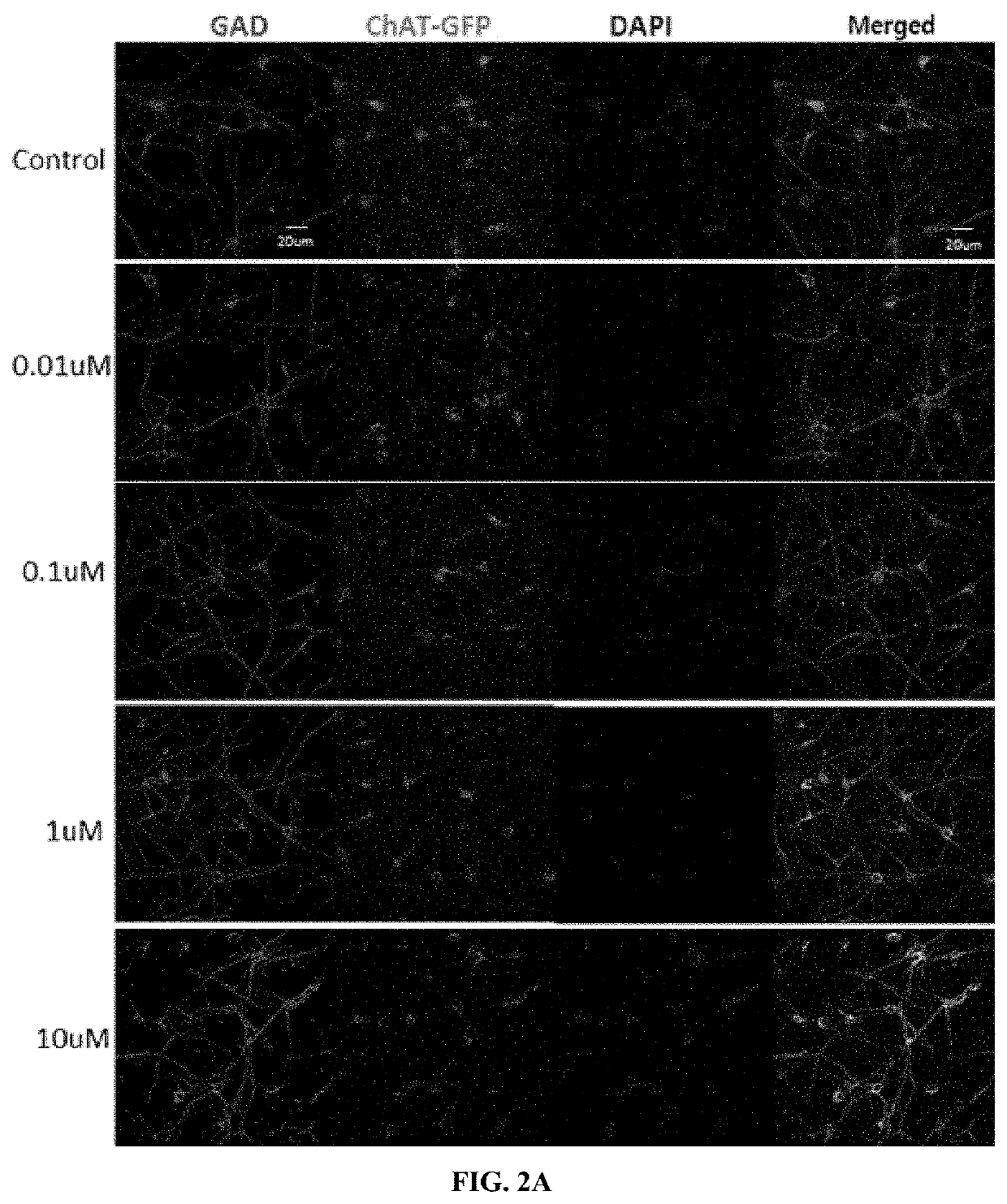Composition for preventing or treating neurological disorder comprising aucubin
a neurological disorder and composition technology, applied in the field of composition for preventing or treating neurological disorders, can solve the problems of affecting the development of language, poor language expression-understanding, and inability to restrain the desire to act hastily, so as to prevent the apoptosis of gabaergic neurons, promote the regeneration of gabaergic neurons, and maintain the survival of gabaergic neurons
- Summary
- Abstract
- Description
- Claims
- Application Information
AI Technical Summary
Benefits of technology
Problems solved by technology
Method used
Image
Examples
experimental example 1
Primary Tissue Culture: Cell Isolation and Culture Method
[0064]In order to culture neurons, cells were obtained from the brain of an E16 rat embryo according to a method known in the art (Lim et al., 2007; Jo et al., 2007). Specifically, hippocampal eminence was isolated from the forebrain of the E16 rat embryo, and cells were mechanically isolated from the thus-obtained hippocampal eminence tissue by using Ca2+ / Mg2+-free HBSS(Hanks' Balanced Salt Solution, Invitrogen). PAX6-GFP expressing neuronal precursor cells (NPCs) were isolated from the sub ventricular zone of a PAX6-GFP transgenic mouse.
[0065]The culture of cells was supplemented with 10 ng / mL or 20 ng / mL of bFGF (basic fibroblast growth factor, Invitrogen), and culturing was performed for 3 days in a serum-free N2 medium. After the confluency of cells reaches 70% to 80% by culturing for 3 to 4 days, the cells were subjected to passaging, and then divided and seeded according to an experimental use. Subsequently, the cells w...
experimental example 2
Immunofluorescence Staining Analysis
[0067]In order to identify the survival rates of mature neurons undergone the primary culture, immunofluorescence staining was performed.
[0068]Specifically, cells placed on a 12 mm glass coverslip (Bellco, USA) were fixed with 4% paraformaldehyde for 30 minutes, followed by washing with PBS. Subsequently, the cells were cultured with each of the following primary antibodies: anti-L glutamate (1:100, abcam), anti-eGFP (1:500, Millipore), anti-gamma-aminobutyric acid (anti-GABA, 1:1000, abcam), anti-glutamic acid dehydrogenase 65 / 67 (anti-GAD65 / 67, 1:500, Chemicon), or anti-vesicular glutamate transporter1 (vGluT1, 1:500, Chemicon). Thereafter, the cells were cultured with a secondary antibody (1:200, Molecular Probes, Eugene, Oreg.) which is conjugated with Alexa fluor, and DAPI (4,6-di-amidine-2-phenylindole dihydrochloride, 1 μg / mL, Sigma) was used as a counterstaining agent. The negative control group was omitted in the step of culturing the cel...
experimental example 3
Immunoblot Analysis
[0071]In order to identify the type of neurons using a neuronal marker, the relative expression levels of protein markers were compared by immunoblot (western blot) analysis.
[0072]Specifically, cells (30,000 cells / cm2), which were cultured in a 60 mm petri dish coated with 15 μg / mL of poly-L-ornithine (Sigma-Aldrich, USA) and 1 μg / mL of fibronectin (Sigma-Aldrich, USA), were used. The cells were lysed using 80 μL of a cold RIPA buffer which includes a protease inhibitor, and then a supernatant including proteins was obtained after performing centrifugation (13,000×g, 10 minutes). The protein quantification was performed using a Bradford protein assay kit (Bio-Rad, Hercules, Calif., USA).
[0073]Subsequently, a mixture of 20 μg of the proteins and a loading buffer (Biosesang Co., Seoul, Korea) was boiled at 100° C. for 10 minutes to denature the proteins. The proteins were isolated using 10% polyacrylamide gel electrophoresis, and transferred to a nitrocellulose memb...
PUM
 Login to View More
Login to View More Abstract
Description
Claims
Application Information
 Login to View More
Login to View More - R&D
- Intellectual Property
- Life Sciences
- Materials
- Tech Scout
- Unparalleled Data Quality
- Higher Quality Content
- 60% Fewer Hallucinations
Browse by: Latest US Patents, China's latest patents, Technical Efficacy Thesaurus, Application Domain, Technology Topic, Popular Technical Reports.
© 2025 PatSnap. All rights reserved.Legal|Privacy policy|Modern Slavery Act Transparency Statement|Sitemap|About US| Contact US: help@patsnap.com



